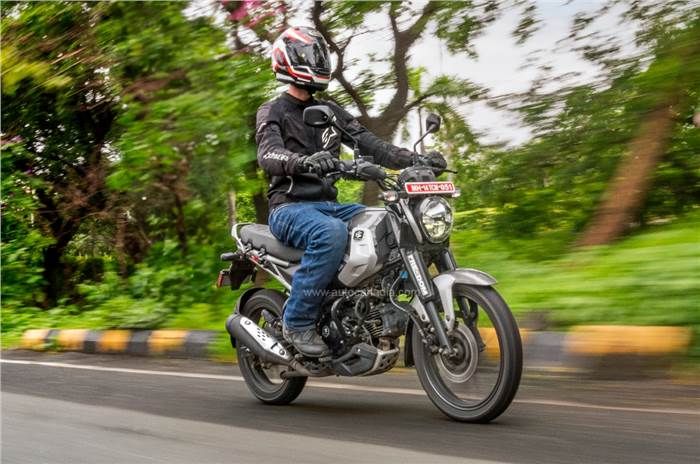
The Bajaj Freedom was launched earlier this year and has now seen its best ever monthly stat during the festive month of October. As per Vahan data (as of November 4, 7am), cumulative sales of the Freedom 125 are 20,942 units, comprising 272 units in the last two weeks of July, 4,111 units in August, 4,937 units in September, 11,041 units in October and 581 units in the first three days of November.
Bajaj Freedom 125 sales
Sales in the first few weeks after launch in July were in three digits because of the new product’s soft rollout in only two states – Maharashtra and Gujarat which have strong CNG filling infrastructure – but have picked up after August 15 when the company expanded the Freedom 125’s availability in 77 towns and cities across India. This would include Tier 2 and Tier 3 towns where the CNG filling infrastructure is gradually growing.
The company is banking on the speedy expansion of the CNG filling infrastructure across the country, currently estimated to be around 7,000 stations and billed to more than double to over 17,000 by 2030. According to Rakesh Sharma, executive director of Bajaj Auto, CNG is available at 335 towns out of the 500 top towns in India and these 335 towns account for 70% of the addressable market.

Given the growing demand for the eco-friendly motorcycle, production of the Bajaj Freedom 125, which began with a capacity of 10,000 units in the first 2-3 months, is planned to be ramped up to 30,000-40,000 units by the end of FY2025, possibly even by January 2025.
Bajaj Freedom 125 prices, range
The ground-up-developed Freedom 125 is a motorcycle that is capable of running on both CNG and petrol. It is pitched as an alternative to similar-category petrol-engined commuter motorcycles, which rely on being tanked up on expensive petrol priced at Rs 104.19 (as of September 3 in Mumbai). It is sold in three variants, starting with the NG04 Drum (Rs 95,000), NG04 Drum LED (Rs 1,05,000) and NG04 Disc LED (Rs 1,10,000, ex-showroom Delhi).
Bajaj Auto claims the Freedom 125 lowers operating costs by up to 50% when compared to similar ICE motorcycles, which translates into a very wallet-friendly Rs 1 per kilometre. The CNG tank provides a range of over 200 kilometres on just 2kg of CNG. Additionally, the bike’s 2-litre petrol tank acts as a range extender, offering over 130km of range in the event of the CNG tank emptying out.

This dual-fuel capability gives the rider a combined range of 330km. The Freedom 125, as per Autocar India tests, delivered mileage of 94km/kg in the city and 126km/kg on the highway. Meanwhile, the fuel efficiency when running on petrol was predictably a lot lower – 53.4kpl in the city and 62.37kpl on the highway. On the emissions front, compared to petrol-engined bikes, the Freedom 125 emits 26.7% less CO2, 85% lower NMHC’s (non-methane hydrocarbons) and 43% less NOx (nitrogen oxide).
In a conference call following Bajaj Auto’s Q1 FY2025 results, executive director Rakesh Sharma had said: “Not only the proposition of 50% savings of the fuel bill is very impactful, Freedom 125 styling, dual fuel capability, the range, ergonomics of the long seat and the comfortable ride due to the linked mono-suspension have all been highly appreciated. We are targeting the mileage-conscious customer in the 100cc to 125cc segment. Of the approximately 1 million motorcycles sold per month in India, almost 75% are in this segment, the 100cc to 125cc segment and about 60% of the demand of these customers has access to a CNG pumping station. Hence, our addressable market is about 450,000 to 500,000 customers per month.
In September 2024, the 100-125cc segment saw wholesales of 10,13,891 motorcycles or 78% of the total 12,98,610 bikes dispatched to dealers in the country. It is this fuel-sipping bike category that puts a value on low cost of ownership that Bajaj Auto and the Freedom 125 are targeting.
Also see: Bajaj Freedom 125 review: Freedom of choice